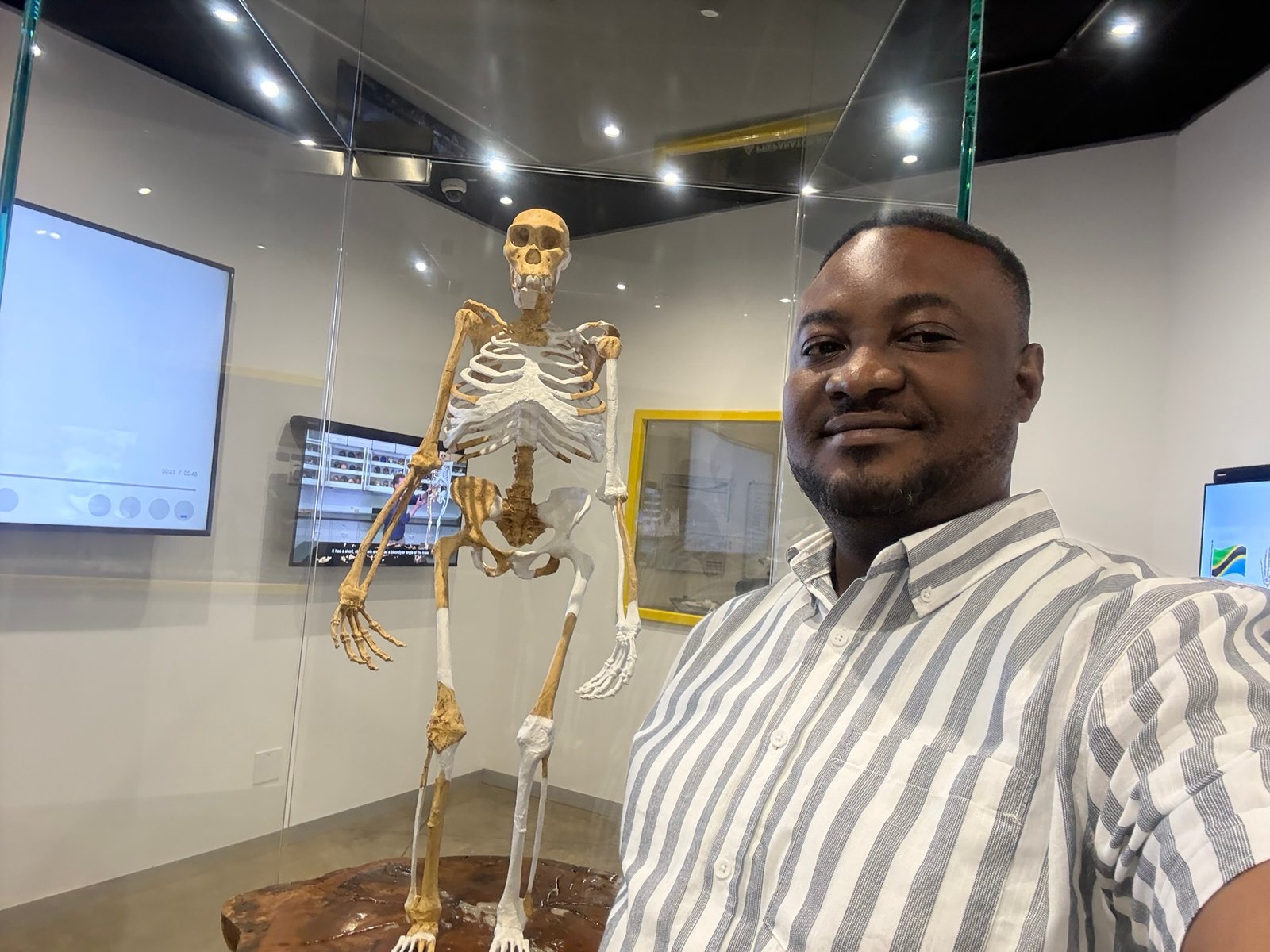What if you could meet your ancestor from two million years ago? At the Cradle of Humankind Museum in South Africa — a UNESCO World Heritage Site — that journey is possible.
During my recent visit, I encountered the story of Australopithecus sediba, a species that lived about 1.98 million years ago. Discovered in 2008 by renowned paleoanthropologist Lee Berger and his then nine-year-old son Matthew, this find reshaped what we know about human origins. Matthew’s now-famous cry — “Dad, I found a fossil!” — led to one of the most important discoveries in modern paleoanthropology.
A species in transition

The museum brings A. sediba to life with stunning exhibits. Scientists describe it as a “bridge species” — not quite ape, not quite human, but carrying traits of both.
They walked upright like us, yet still climbed trees with their long, curved fingers. Their brains were small (about 420 cc, just a third of ours), but scans show the frontal lobe was reorganizing — an early step toward the intelligence that defines humanity today. Their diet of fruits, leaves, and bark shows they thrived in wooded landscapes, overturning old theories that humans evolved only on open savannahs. Their hips, legs, and hands revealed an evolutionary blend closer to Homo than earlier australopithecines.
One exhibit even allowed me to compare my own hand with a fossil replica. Hers was shaped for climbing; mine for technology. Evolution leaves its mark everywhere — even on us.
Why this matters for Africans today

The Cradle of Humankind is more than a tourist site. It is living evidence that Africa is the birthplace of humanity. Our shared story begins here — in stone, bone, and fossilized memory.
For West Africans, particularly Ghanaians, this site presents an extraordinary opportunity for domestic and regional tourism. Ghana’s “Year of Return” in 2019 showed the power of heritage travel to attract both locals and the diaspora. Sites like the Cape Coast Castle and W.E.B. Du Bois Center connect us to more recent chapters of history. The Cradle of Humankind extends that journey further back — to our very origins.
Imagine a cultural itinerary that links Ghana’s historical landmarks with South Africa’s paleo-anthropological treasures. For students, educators, and families, this could create a pan-African travel ecosystem where history, science, and tourism intersect.
A bridge between science and belief

Some visitors ask whether fossil discoveries challenge faith. The museum frames it differently: fossils explain how humans emerged over millions of years, while questions of why we exist belong to personal belief systems. Science and spirituality can coexist — each answering different questions.
The take-home message

As I walked out of the museum, I felt a profound connection — not just to ancient ancestors, but to Africa itself. This isn’t myth or folklore; it is our shared human history. And it began here, on African soil.
For Ghanaians planning future travels, sites like the Cradle of Humankind remind us: when we explore Africa, we are not just tourists. We are journeying home — to the very roots of humanity.

